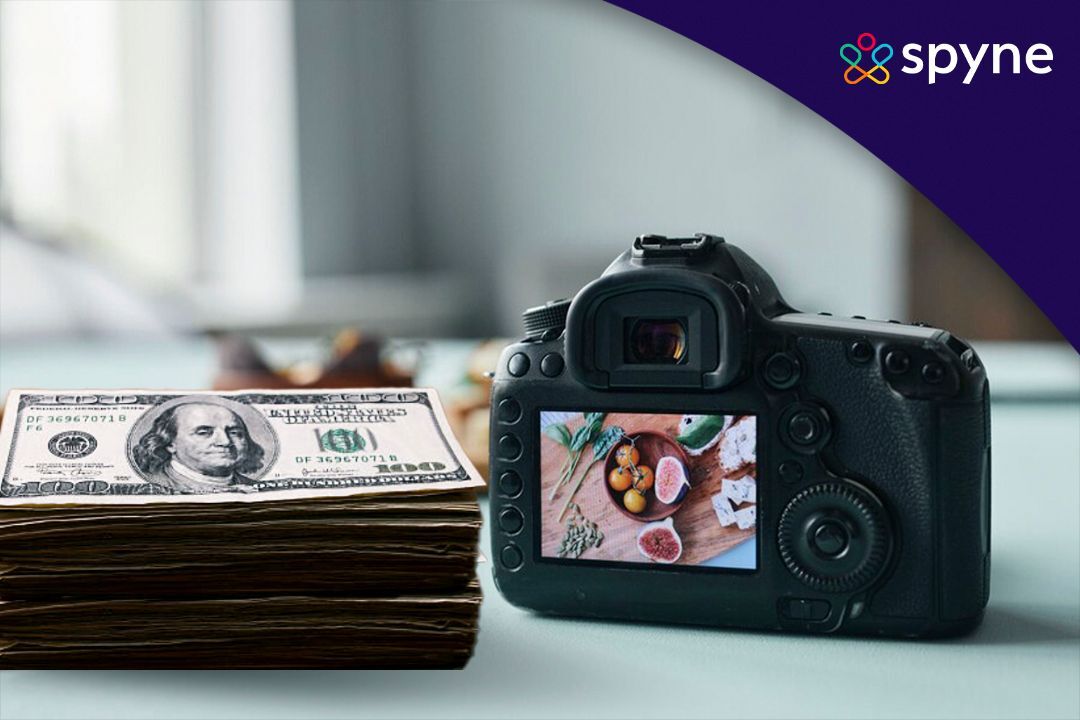In today’s era, food is incomplete without photography, aesthetics, and styling. Do you know that 43 percent of Instagram users like content related to food and drinks? Social media users are likely to notice photos of pizza before anything else.
Speaking of which, food photography is becoming one of the most sought-after and demanding professions today. Nearly half of Americans take pictures of food wherever they go. Besides, professional food photographers earn a whopping USD 90,000 in a year.
Unfortunately, it also means that businesses dealing with services in the food and beverage industry are facing food photography pricing issues. While aesthetic food visuals are quintessential to increasing engagement and reeling in customers, coping with skyrocketing food photography rates is a serious issue.
Overview of Food Photography Pricing
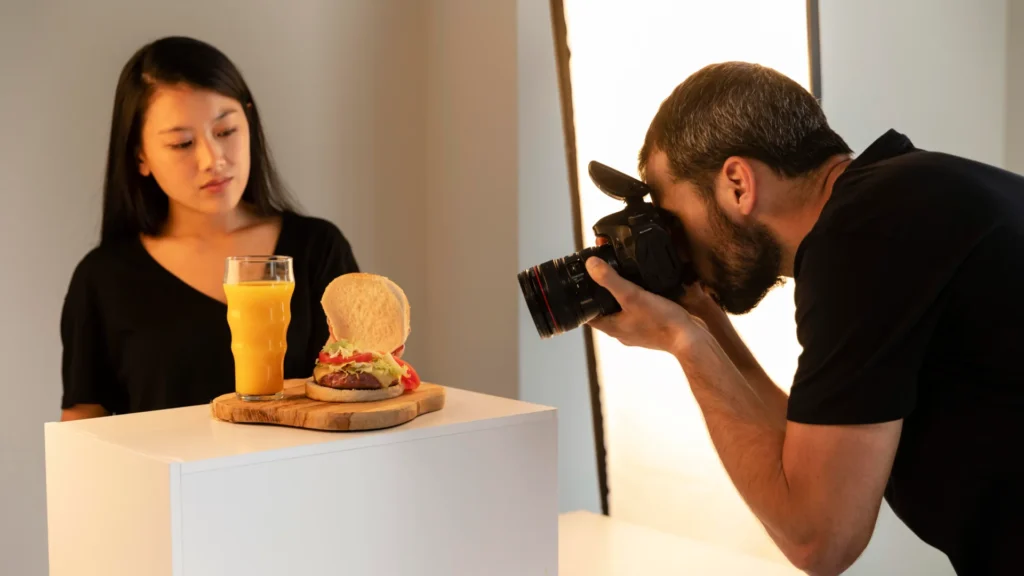
Food photography costs can vary depending on several factors, viz., the photographer’s experience, location, the scope of the project, and the food business’ purpose in using food pictures. Generally, there are three main pricing structures for food photography:
Hourly rates: Food photography packages range from $50 to $500 per hour. This pricing structure is suitable for small-scale projects that require only a few hours of shooting and post-production.
Project rates: Project rates are a flat fee for a specific project, like shooting menus or cookbooks. It can range from $500 – $10,000 and depends on the following:
- The scope of the project
- The number of images required, and
- The level of post-production work
Licensing fees: Licensing fees are charges for using food photographs. A photographer uses this food photography pricing structure primarily for commercial photography packages, like ads or packaging. The licensing fee can lie between a hundred and a thousand dollars, depending on the planned use.
However, remember that food photography costs can also be influenced by factors such as the photographer’s reputation, aesthetics, eclectic style, and availability. Therefore, businesses must request quotes from several food photographers and compare their prices to find the best fit for their needs and budget.
Complete Guide to Food Photography Rates
One of the most important questions for food businesses and photographers is: what food photography pricing should look like. Well, there are more than one-size-fits-all strategies. But for starters, Food Photographers can consider the following pointers to decide on their food photography.
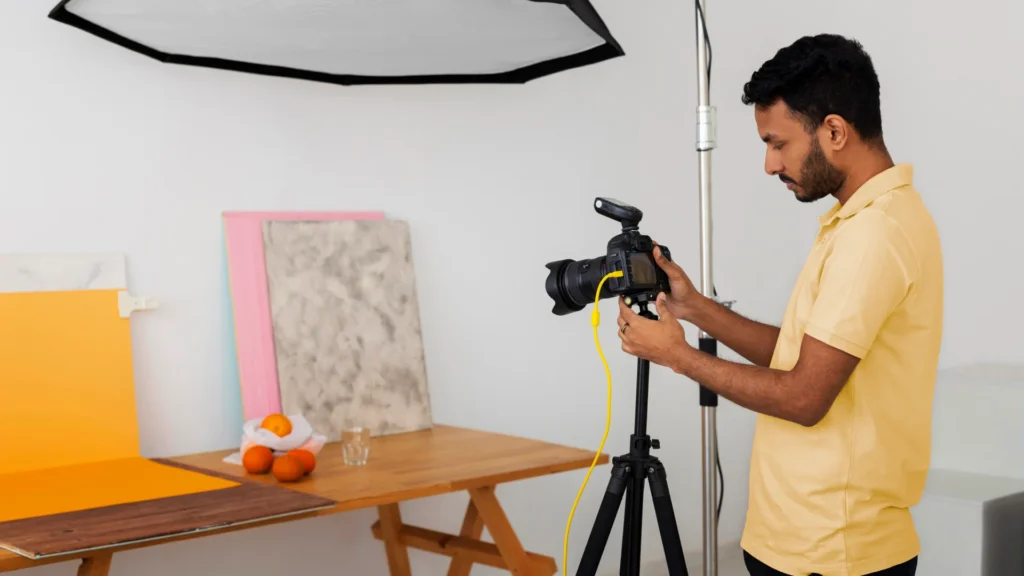
You can go for food photography costs according to the:
- Hours
- Standard day rate
- By the image
- By the recipe
- The entire project
Pricing Guide for Food Photographers: How Much to Cost?
Each Food Photography Setup is often poles apart, making it unique. So, there is no single rule for pricing. However, certain unsaid practices help establish rates.
The most efficient approach is determining a ballpark figure as a starting point, unlike randomly selecting a rate without any basis. Here are a few ways to charge based on different food photography jobs.
Editorial
Editorial photography focuses primarily on magazines and storytelling. Usually, the magazine or company will have a set photography budget for the project, making it more convenient to charge by concept or project instead of a daily rate.
Working with a stylist is typical for this type of work, and you must factor in their fees when determining the price. Larger, featured images are more likely to pay more than filler images, with rates increasing based on the image’s size in print. For instance, charging per shot may be more suitable if you’re only responsible for photographing the featured shot.
Commercial
Commercial photography involves collaborating with clients to create images for their commercial use, excluding advertising. Unlike other types of photography, you’ll be responsible for providing your gear, renting equipment, hiring assistants, stylists, props, and other necessities. Hence, it’s critical to factor in these expenses when setting your rates.
Pricing for these jobs involves determining the three components of your fee: creative fee, shoot expenses, and usage license for the images. Your usage license should be based on the intended use of the photos, with rates varying based on the potential income they may generate for the company.
When working with smaller businesses, such as local cafes, offering a package rate for a specific number of shots or photos of a set number of dishes from their menu may be more beneficial.
Advertising
Ad food photography is similar to commercial food photography but is often more complex and demanding as highly branded images are required for ad campaigns. Since these clients usually have bigger budgets, the licensing fee can be significantly higher. It is recommended to price your services per day for these kinds of shoots, but if the images are very complex, you may want to price per shot.
Cookbooks
Pricing for cookbook photography is usually done as a whole project since it can take weeks to complete. It’s important to charge appropriately for the time and expenses involved. Consider the cost of a full crew, including a stylist and assistant, and factor that into your quote.
Photography for Web
Pricing food photography for web use is challenging because of the diverse range of clients and jobs. While web projects are easier to complete, they may pay less than other types of food photography. Hence, pricing for these jobs per package or per shot may be best. Cover your expenses and make the profit you want for your time.
Pay close attention to your niche
Consider your place in the food photography industry when setting your pricing guidelines. This includes determining whether you’ll work more with direct clients or agencies, what types of shoots you plan to focus on, and where you hope to expand.
Pricing based on client size
When it comes to pricing your Food Photography Services, the size of the client can be a significant factor to consider.
- Small businesses and startups, like local restaurants or cafes, offer package deals or lower overall pricing to help accommodate their budgets.
- For mid-sized businesses, like regional restaurant chains or food product companies, you can charge a bit more per project or offer a daily rate that reflects the level of work involved.
- For larger clients, like national or international restaurant chains or major food brands, you can charge a premium rate since these clients usually have high dollars and are willing to pay more for high-quality, branded images that will represent their company.
Food Photography Pricing Guide for Food Business Owners: How Much will it Cost You?
If you are a food business owner looking to hire a food photographer, it’s important to understand how a food photography package works. The food photography cost can vary depending on several factors, including the photographer’s experience, location, the project’s scope, and the images’ intended use.
Here are major factors to keep in mind as you consider pricing for food photography:
Photographer’s Experience
Generally speaking, the more experienced a photographer is, the higher their rates will be. A photographer with a strong portfolio and extensive experience working with food will likely charge more than a photographer who is just starting out.
Location
Rates for food photography can vary based on location. Photographers in major cities or areas with higher costs of living may charge more than photographers in smaller towns or rural areas.
Scope of the Project
The scope of the project will also impact pricing. A simple shoot with a few dishes may cost less than a more extensive project with multiple setups and a wider variety of food items.
Intended Use
The intended use of the images will also impact pricing. If you plan to use the photos for social media or your website, the cost will likely be lower than if you plan to use the images for advertising or print materials.
Considering the above factors in mind, here are some general pricing guidelines for food photography:
- Basic package
This may include a half-day shoot with 2-3 dishes and simple styling. Prices for this package can range from $500-$1000.
- Standard package
This may include a full-day shoot with 4-6 dishes, more complex styling, and post-processing. Prices for this package can range from $1000-$2500.
- Premium package
This may include a full-day shoot with 8-10 dishes, complex styling and set design, and extensive post-processing. Prices for this package can range from $2500-$5000 or more.
Remember that pricing can vary widely depending on the photographer and the specific project requirements. It’s always a good idea to request a quote from the photographer and discuss your particular needs and budget to ensure you’re both on the same page.
Food Photography Rates by Day
This is one of the most convenient and accessible ways to calculate food photography costs. However, this method is time-consuming to track for photographers. But for businesses, it gives an easy way to negotiate. Additionally, it’s common to underestimate the project’s duration, often leading to companies paying a lot more than anticipated, which could be better.
On the other hand, a day rate is comparable to an hourly rate, except that photographers charge for each day instead. This pricing structure is frequently used for on-site photography projects, such as Restaurant Photography.
Food Photography Rates per Image
The food photography cost per image is lower for larger projects that require more images. For example, if a business needs ten or more images, they may negotiate a lower cost per image than if they only need a few.
However, It’s crucial to note that the price per image may not include additional expenses, such as post-production work, image licensing, and travel costs. Therefore, by discussing all potential costs with the photographer beforehand, businesses can reach a win-win deal with photographers.
Food Photography Rates by the Project or Recipe
This is one of the most preferred styles of food photography pricing strategy. This approach allows them to consider all deliverables holistically, combining my creative fee, expenses, and image licensing into a standard rate.
However, both businesses and photographers must clarify several critical variables before agreeing on a project estimate, like the:
- The complexity of the recipe or shoot
- Number of images required
- Usage rights for those images
- Budget for props and ingredients, along with other essential details.
How do Photographers Build their Food Photography Packages?
Although there is no definitive formula, food photographers often break down food stylist rates into three distinct components:
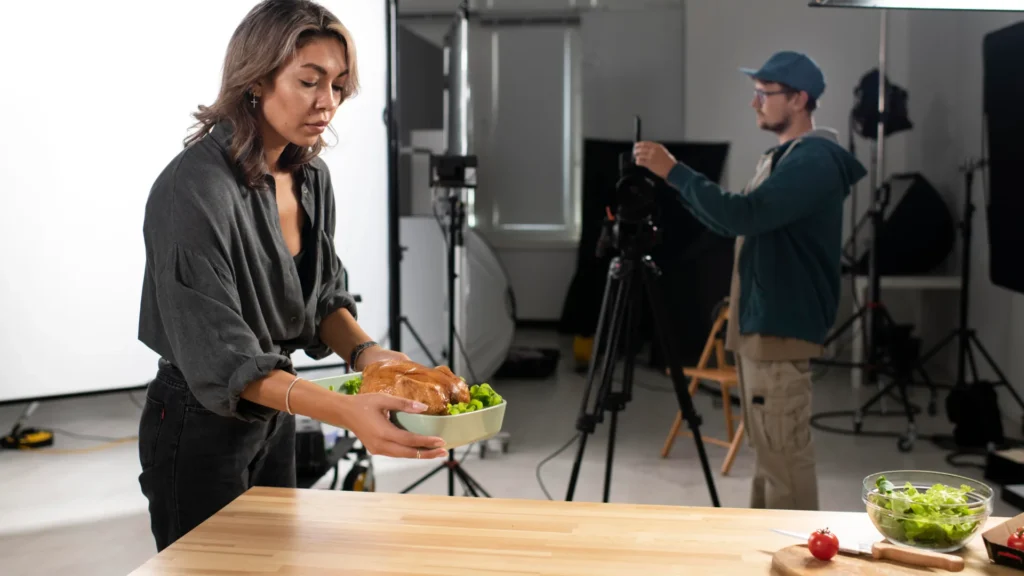
- Creative fee – Your creative fee should serve as your fundamental rate. There are various methods for calculating this, but I base mine on my experience and time spent.
- Expenses – This covers the project and your overall business operating expenses.
- Licensing – This needs to be addressed by new photographers but is critical. Food photography licensing refers to the brand “renting” usage rights to your image, with fees varying considerably based on their intended usage.
Why are Food & Restaurant Photography Packages so High?
Food photography packages can be high for several reasons. Firstly, food photography requires a high level of technical skill and creativity to capture visually appealing and delicious images. The photographer needs to be able to work with lighting, composition, and other factors to create a high-quality image that showcases the food in the best possible way.
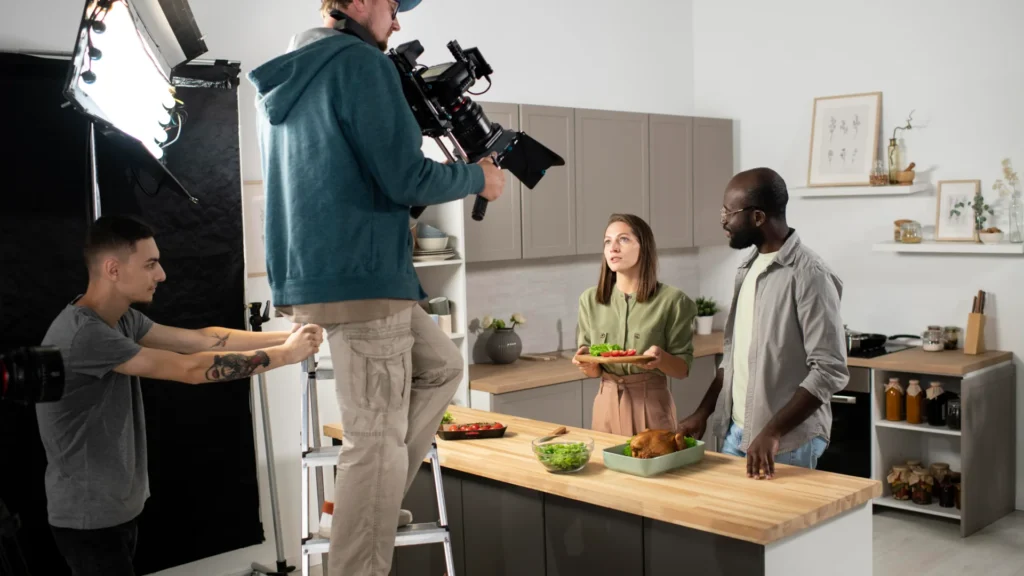
Secondly, Food Photography Studio cost often includes charging for additional services such as styling, prop sourcing, and editing, which can increase the overall cost of the package. These services are essential for creating a professional and polished final product.
Finally, food photography packages may also include licensing fees for using the images. This is because the photos are often used for commercial purposes, such as advertising, and therefore the photographer is entitled to compensation for the use of their work.
Food photography can be a costly affair, but it needs to be understood by those who are not familiar with the process. Giving a standard pricing estimate is difficult as every project is unique and requires varying elements based on the food business needs. Whether you are a food photographer looking to provide an estimate or a food business seeking a food photographer for your Restaurant Marketing, it’s essential to understand what is involved in a food photography shoot and why it can be expensive.
How can Businesses Reduce Food Photography Costs?
There are several ways businesses can reduce food photography costs:
- Plan: Good planning is key to minimizing costs. Communicate your needs and goals with your photographer before the shoot. This allows them to provide a more accurate quote and plan the shoot more efficiently.
- Provide a detailed brief: A clear and detailed brief can help the photographer understand exactly what you are looking for and reduce the need for reshoots or additional edits.
- Use props and ingredients wisely: If you have specific props and elements you want to use in the shoot, make sure they are ready and available on the day of the shoot.
- Consider a half-day shoot: Instead of a full-day shoot, consider a half-day shoot to reduce costs. This may require some additional planning to ensure everything can be captured in a shorter amount of time.
- Use stock photography: If you need images for your website or social media, consider using stock photography. This is often more affordable than commissioning a photographer for a custom shoot.
- Negotiate pricing: Feel free to negotiate pricing with your photographer. Many offer discounts if you can provide multiple projects or ongoing work.
Don’t Hesitate To Ask Questions Before Finalizing Food Photography Pricing
Food photography pricing can vary widely depending on the project’s specific details. Asking a food photographer for their “rates” without providing details is like asking an architect how much it costs to build a house without specifying any requirements. It’s essential to ask questions before discussing pricing with clients to understand their needs and help them think critically about their projects. This approach benefits both the photographer and the food business.
Spyne’s AI-Powered Food Photography at Your Rescue
When you can do everything with just a few taps from smartphones, why go through all the struggles of super expensive and time-consuming food photography?
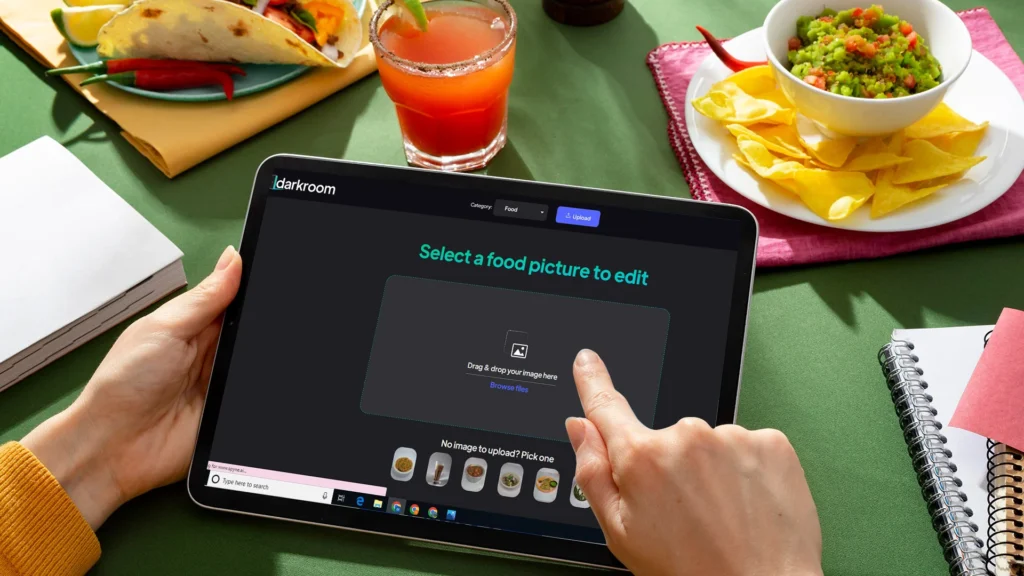
To help you escape the hassles of raging food photography pricing and going to and fro with photographers to reach a consensus, Spyne brings you a Food Photo Editor built with state-of-the-art AI. It’s a leading food photography solution provider which uses AI food photography algorithms and minimizes human effort by sharing the load of editing, changing backgrounds, adding realistic shadows, and ensuring the best colors to make the food visuals look eclectic, stylish, lively, and authentic, doing all these while giving top-notch quality and resolution to your food pictures.
Spyne’s virtual studio lets you choose from innumerable pre-designed or custom backgrounds and adjust environmental factors, like lighting and shadows, to achieve a specific look and feel for your photos. Using Spyne’s Food Photography App is affordable, flexible, accessible, and efficient.
It’s more cost-effective than traditional studios or hiring professionals as it allows for easy set changes, makes remote work possible, and streamlines the photography process. This means no more accommodating significant team expenses, costly location shoots, and no bickering over per day rate or food photography price per image.
Does this intrigue you? Want to learn more about how you can cut down roof-touching food photography pricing through Spyne AI? Talk to us today or book a free demo!

